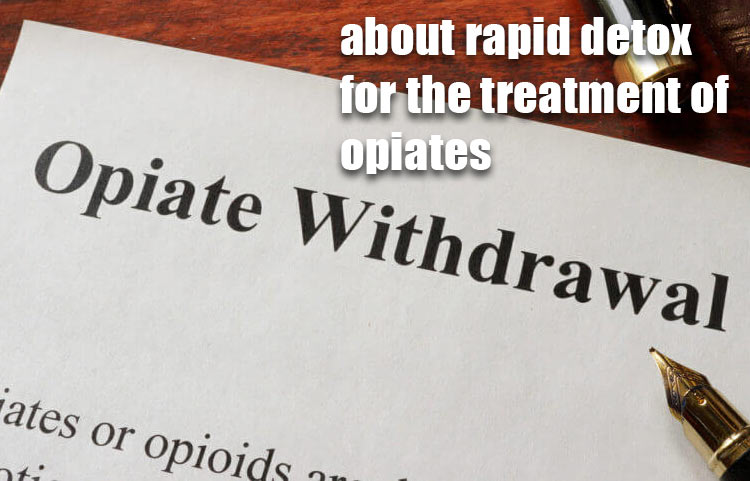Table of Contents [show]
People suffering with opioid addiction usually suffer a lot of challenges to achieve a successful detox and once again become clean, successful human being. Discontinuation of opioid abuse often results in serious discomfort associated with withdrawal symptoms. Minimize the pain and discomfort of detox, you get a much higher success rate.
For many of these patients, rapid opioid detox is a medical procedure that promises fast, painless, same-day detox treatment. However, there has always been significant controversy surrounding the effectiveness and safety of rapid opiate detox as a treatment method for opiate addiction.
What Does the Procedure Involve?
During rapid opioid detox, the patient is administered an IV sedation of general anesthesia under the supervision of a medical professional in a hospital setting. This allows the patient to sleep through the withdrawals so they don’t experience any of the adverse symptoms that accompany the withdrawal process.
Once this procedure is over, the patient is placed on medication that blocks opiate receptors in the central nervous system to help minimize cravings. In a nutshell, rapid opiate detox integrates sedation and medication to speed up the detox process.


Is Rapid Opiate Detox Safe and Effective?
Rapid opiate detox is widely touted as a painless procedure of detox that enables an individual who is addicted to opiates to withdraw effortlessly. While this may sound quite appealing for people trying to beat opiate addiction, there are numerous reasons why it is not considered safe or effective. Several clinical studies have shown that it can cause adverse health effects such as:
- Nausea
- Vomiting
- Heart attack
- Paranoia
- Choking
- Death
- Aspiration
- Fever
A clinical trial funded by the National Institute on Drug Abuse in 2006 established that patients who were addicted to heroin and underwent rapid opiate detox suffered withdrawal symptoms as serious as those experienced by patients in traditional detoxification methods. The researchers determined that there is no convincing reason to use general anesthesia in treating opiate addiction. The study found that using anesthesia presents certain safety concerns. These findings are in line with the findings from three other international studies.
What is the Safe and Effective Alternative to Rapid Opiate Detox?
It is important to understand what options are most effective in the treatment of opioid addiction. Numerous treatment centers across the world have proved that Accelerated Neuro-Regulation (ANR) is a safer and more effective alternative treatment option compared to rapid opioid treatment. The procedure is based on first understanding how a person’s brain operates while in a normal state and how it changes after exposure to opioid drugs over time.
ANR is a more refined version of rapid detox and Ultra Rapid Detoxification. Although ANR is based on the foundations of Rapid Detoxification, ANR is not Rapid Detox. Rapid opioid detox does not rectify the critical chemical imbalance existing in the brain of an opioid addict. Rapid detox simply helps to manage the secondary effects of addiction, which often present as symptoms of opiate withdrawal. It is therefore an outdated method that is ineffective compared to ANR.
On the contrary, ANR involves pre-procedure evaluation and stabilization by a trained physician. The procedure also involves controlled sedation administered by an anesthesiologist. Thirdly, ANR involves rebalancing of endogenous opioids and receptors and effectively achieves reversal as well as elimination of psychological cravings. Overall, ANR is safer and more effective that rapid detox, which is outdated, ineffective, and unsafe. Let’s not even begin to talk about detoxing your hair for work drug tests. Beats the purpose, no?




